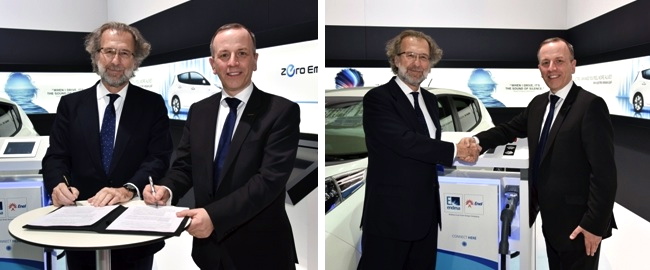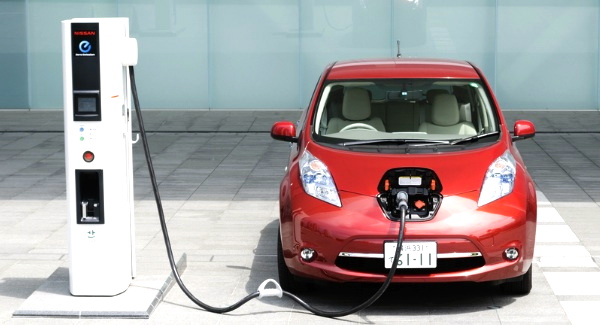EV Owners Can Sell Surplus Renewable Energy Back to Utility
- 22/07/2015
- Transport
- Posted by Tessa Romarez
- Leave your thoughts
Nissan, one of the world’s top electric vehicle makers, signed a deal with utility corporation Endesa
In effect will allow users of EV to sell excess renewable energy in their batteries to the electric grid.
The two companies signed the contract on mass-market-car-to-grid system at the Geneva International Motor Show, with both in a joint effort to provide an affordable market-ready system while maintaining on a viable business model.
Currently the top seller of electric vehicles with more than 160,000 Leaf sold all over the world, Nissan has its focus on zero emission mobility. It is proud to have Endesa as its partner in the charging business, the reason why it is able to maximum the potential of its EV batteries.

- Javier Uriarte, Head of Market Iberia at Endesa, and Paul Willcox, chairman of Nissan Europe, sign a pledge to promote a vehicle-to-grid system in Europe. Photo Credit: Nissan
The V2G system is Endesa’s 2-way charger and energy system that integrates off-grid power generation in the same way as that of PV panels and wind turbines. With the use of the equipment, an owner of a Nissan LEAF or e-NV200 will be able to connect to a charger on low-demand, with an option for him to use the electricity stored in the EV’s battery for his home.
He also have the option to return any unused electricity back into the utility grid and get paid for it. Electric power that comes from solar panels and wind turbines are alternative ways of charging a vehicle, using electricity for every home, or feeding unused energy back to the grid.
Both Nissan and Endesa agreed on a collaboration to the entry of V2G services in Europe and the exploration of use of 2nd life EV batteries for applications at homes, buildings, and grids.
The two companies are also set to design and evaluate potentially cheap renewable energy and mobility offerings. Chairman of Nissan in Europe, Paul Willcox, have only good words for the two-way charging system and the changes that are meant to accelerate the progress of the EV market.
Willcox said: “We believe this innovation represents a significant development for Nissan Leaf and e-NV200 customers. Every Nissan electric vehicle battery contains a power storage capability that will prove useful in contributing towards smarter and responsible management of the power demand and supply of local power grids, thus reducing our EV total cost of ownership.
He added that it is not just a chance for EV and fleet owners of Nissan to have a part in environment reparation, but it also offers support to grid stability. It becomes apparent that every Nissan electric vehicle is an overall good asset.
One of the challenges that electricity management systems focus on is the assurance of a stabilize grid. Such a situation is relevant where there is an abundance of generated renewable energy, which is set to happen in the near future.
The long-term vision for EV zero-emission is to be in the midst of an integrated system where owners can join in the energy market on a wholesale scheme while using the stored power in their electric vehicles’ batteries.
The flexibility of V2G implementation further enhances the benefits from electric mobility. This is the reason why Nissan and Endesa decided to work together to promote this technology.

